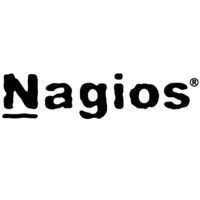Need advice about which tool to choose?Ask the StackShare community!
Ganglia vs Nagios: What are the differences?
Introduction
Ganglia and Nagios are both popular monitoring tools used in the IT industry. While they both serve the purpose of monitoring systems and network resources, they have key differences that set them apart from each other.
Architecture: Ganglia is designed with a decentralized architecture, where individual nodes collect data and send it to a central database for storage and analysis. On the other hand, Nagios follows a centralized architecture, where a central server actively polls remote hosts to collect data and perform checks.
Scope of Monitoring: Ganglia primarily focuses on cluster and grid computing environments, making it suitable for monitoring large-scale systems with a high number of interconnected nodes. Nagios, on the other hand, is more versatile and can monitor various IT infrastructure components, including networks, servers, applications, and services.
Data Visualization: Ganglia provides a visually appealing and intuitive graphical representation of data using line graphs, stacked graphs, and heatmaps. It allows users to easily analyze trends, patterns, and correlations. Nagios, on the other hand, offers a more text-based and customizable visual representation, which may require more expertise to interpret and analyze.
Alerting and Notification: Nagios is well-known for its robust alerting and notification system. It allows users to set up complex alert conditions based on various parameters and send notifications via email, SMS, or other methods. Ganglia, on the other hand, does not include built-in alerting and notification features. However, it can be integrated with other tools or scripts to achieve similar functionality.
Plugin Ecosystem: Nagios has a wide range of third-party plugins available, allowing users to extend its functionality and monitor specific applications, devices, or protocols. This extensive plugin ecosystem makes Nagios highly customizable and adaptable to various monitoring requirements. Ganglia, on the other hand, has a more limited plugin ecosystem, offering fewer options for extending its core capabilities.
Resource Consumption: Ganglia has a lightweight footprint compared to Nagios, making it more suitable for monitoring resource-constrained environments or systems with a large number of nodes. Nagios, being a more feature-rich and centralized tool, may consume more system resources, especially when monitoring a large number of hosts.
In summary, Ganglia and Nagios differ in their architecture, monitoring scope, data visualization, alerting capabilities, plugin ecosystem, and resource consumption. Ganglia is best suited for cluster and grid computing environments, while Nagios is a versatile tool capable of monitoring various IT infrastructure components.
- free open source
- modern interface and architecture
- large community
- extendable I knew Nagios for decades but it was really outdated (by its architecture) at some point. That's why Icinga started first as a fork, not with Icinga2 it is completely built from scratch but backward-compatible with Nagios plugins. Now it has reached a state with which I am confident.
Pros of Ganglia
Pros of Nagios
- It just works53
- The standard28
- Customizable12
- The Most flexible monitoring system8
- Huge stack of free checks/plugins to choose from1





























